Hoar Frost vs. Rime Ice: What’s the Difference?
Ice and frost, with their delicate beauty and formidable power, have captivated humans for generations. These cold weather phenomena play a pivotal role in numerous industries, shaping the way we live and work. In this blog post, we will explore the essence of ice and frost, differentiate them from frozen precipitation, delve into their various forms, and take a closer look at their profound impacts on industries such as agriculture, energy, insurance, transportation, outdoor entertainment, and drone operations.
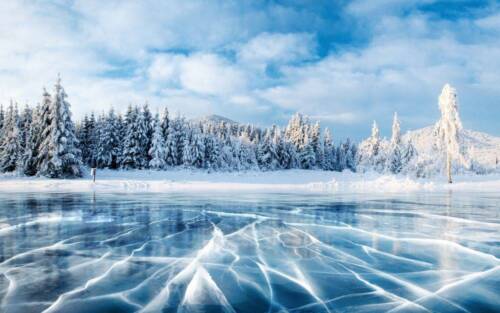
Understanding Ice and Frost
Ice, in its most fundamental form, represents water in its solid state, where 0°C or 32°F marks the freezing point. It forms when liquid water cools and undergoes a transformative process, adopting a crystalline structure. Frost, on the other hand, presents itself as a delicate, crystalline deposit of ice. It emerges on surfaces when moisture in the atmosphere freezes upon contact, crafting a picturesque landscape of ethereal, feathery patterns.
Distinguishing Them from Frozen Precipitation
While all these forms are connected by their frozen nature, ice and frost are significantly different from frozen precipitation. Frozen precipitation encompasses a range of forms, including snow, sleet, and hail, which originate in the atmosphere and form while suspended in mid-air before they reach the Earth’s surface. In contrast, ice and frost form directly on surfaces and solid structures.
Ice vs. Frost
The contrast between ice and frost is more than just a matter of terminology; it extends to their formation, appearance, and impact.
Formation
Ice is the result of the freezing of liquid water, typically filling containers and taking their shape. Ice can also result from freezing rain coating surfaces such as cars parked outside.
Frost, conversely, arises when airborne moisture freezes on solid surfaces, such as windows, leaves, or grass, creating a layer that adheres to the contours of the object.
Appearance
Ice is usually transparent and can be molded to match the container it freezes in, such as ice cubes in trays or a pothole. Ice can sometimes also be destructive – it can expand to the point of breaking the container it is in.
Frost takes on a delicately opaque, crystalline form, often sculpting intricate patterns and designs, rendering it a captivating natural artwork.

Diverse Forms of Ice and Frost
Within the realm of ice and frost, a multitude of intriguing forms emerges, each distinguished by its distinctive characteristics:
Rime Ice
This type materializes when supercooled water droplets come into contact with objects and freeze, resulting in its distinguishing milky, white appearance.
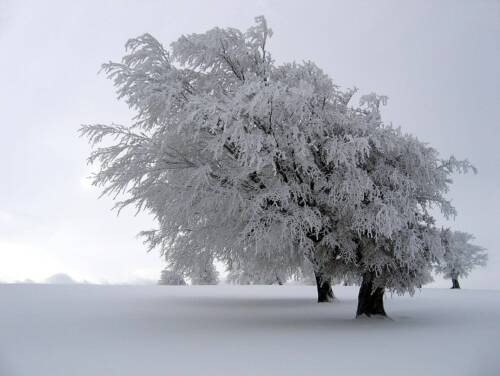
Glaze Ice
It forms a smooth, transparent layer that arises when freezing rain makes contact with surfaces, making them slippery and treacherous.
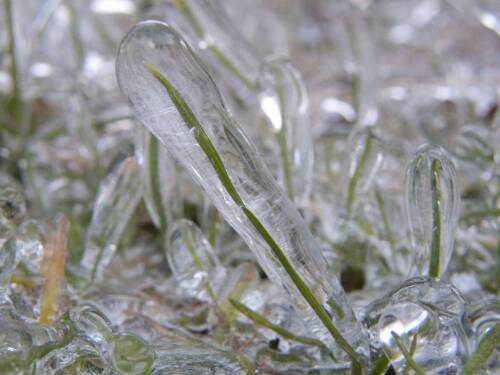
Hoar frost
A manifestation of delicate ice crystals that flourish on cold surfaces, often weaving intricate and ornate patterns. It is often distinguishable by its feathery, or beard-like, appearance.
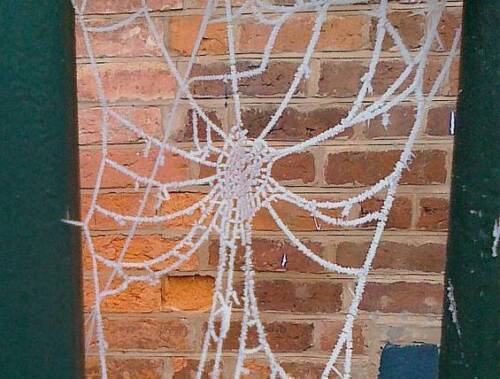
Black Ice
A perilous and nearly invisible sheet of ice that coats roads and walkways, posing a substantial hazard due to its slippery nature.
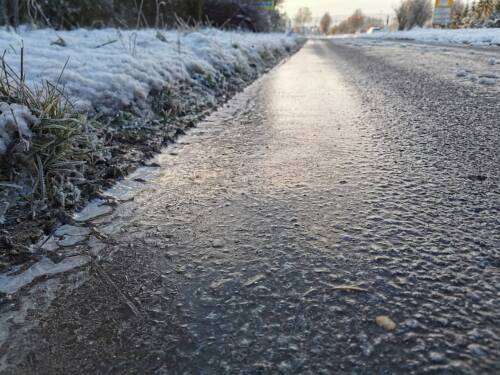
By Triplec85 – Own work, CC BY-SA 4.0
Impacts on Diverse Industries
Agriculture
Frost can inflict harm on crops, especially varieties that ae not as hardy, as it freezes plant cells, causing ice crystals to rupture cell walls.
Ice storms can lead to damage on farms, including tree branches and power lines, disrupting operations. Crop loss due to frost and ice can be financially devastating to farmers, impacting food supply chains.
Energy
Accumulation of ice on power lines and wind turbines can trigger outages and hinder energy production. Ice can weigh down transmission lines, causing them to snap under the strain. Wind turbines can freeze, leading to reduced energy output. On the flip side, nuclear power plants utilize ice condensers for critical cooling and safety measures, highlighting the delicate balance between the advantages and challenges of ice.
Insurance
Winter weather events, such as ice storms, are significant insurance risks, often leading to property damage and business interruptions. These weather-related claims can place a considerable financial burden on insurance companies and homeowners alike. Additionally, the demand for specialized insurance policies to cover winter weather damage is steadily growing.
Transportation
Treacherous icy roads and runways present substantial hazards, leading to accidents and flight cancellations. Ice on roads can be a life-threatening issue, while ice on runways and aircraft disrupts air travel schedules and increases costs. For example, de-icing larger aircraft can cost over $13,000. Delays and increasing costs impact not only passengers but also the aviation industry as a whole. Accumulated ice can add weight to vehicles, affecting both fuel efficiency and safety, driving up maintenance costs and reducing overall operational efficiency.
Drone Operations
Cold temperatures can impact battery performance, diminishing drone flight times and functionality. Icy conditions may lead to equipment malfunctions and flight instability, necessitating special precautions. In the rapidly expanding world of drone technology, cold weather restrictions and challenges pose hurdles for the industry’s growth and operational flexibility.
Better Weather Insights Lead to Better Preparation
Ice and frost, while evoking images of frosty mornings and frozen landscapes, wield significant influence across numerous industries and facets of our daily lives. Understanding the nuances of these crystalline structures, their various forms, and their impacts is paramount for navigating the challenges they present and harnessing the benefits they offer. From agriculture to drone operations, ice and frost are pivotal factors that can have severe impacts on operations and revenue, particularly during the winter months. If your organization would like to harness the fastest most accurate weather insights to better plan and prepare for the risks or benefits that frost and ice offer your industry, contact us.

